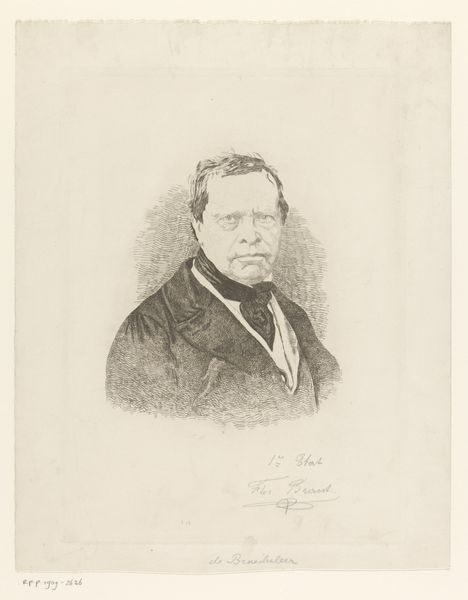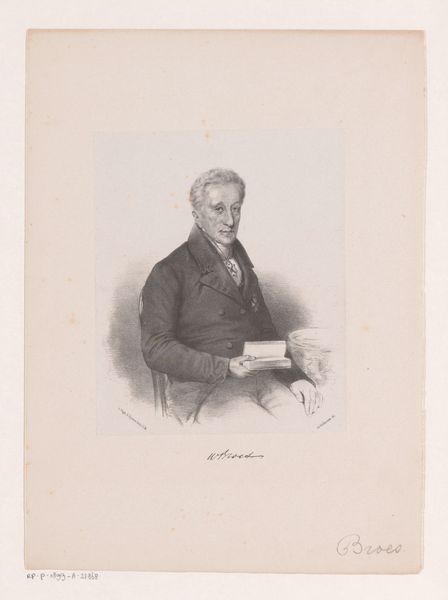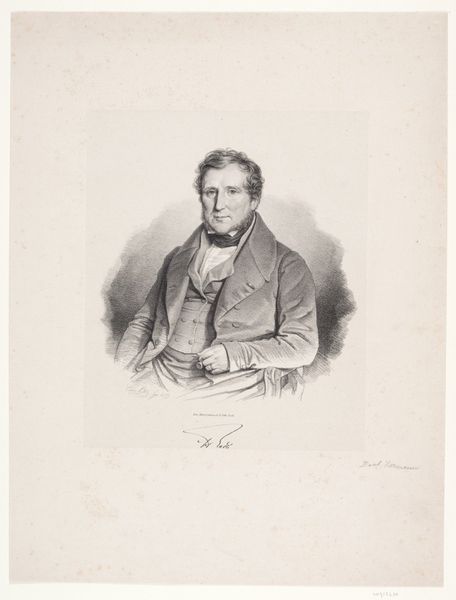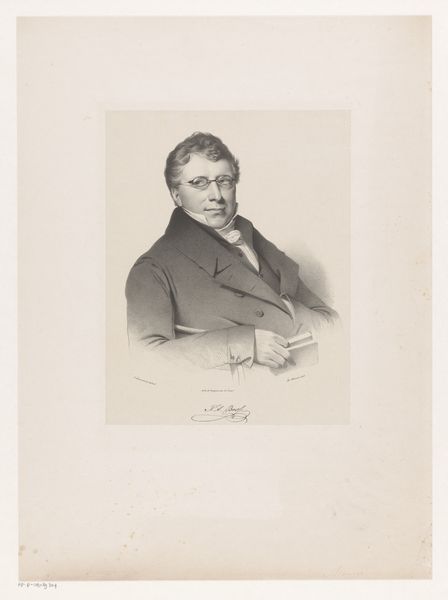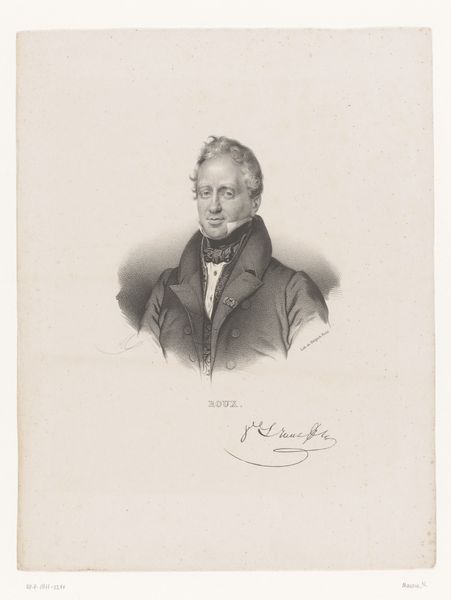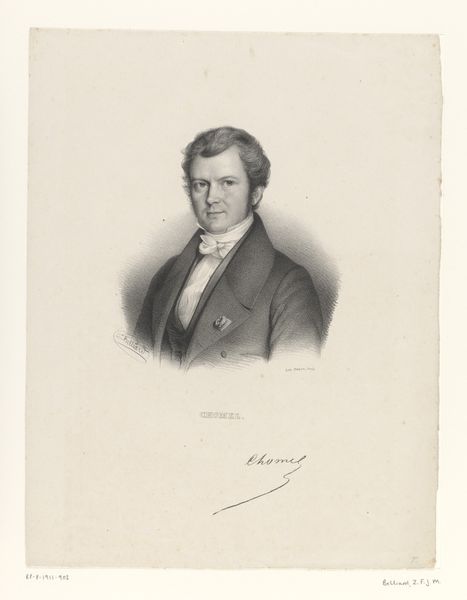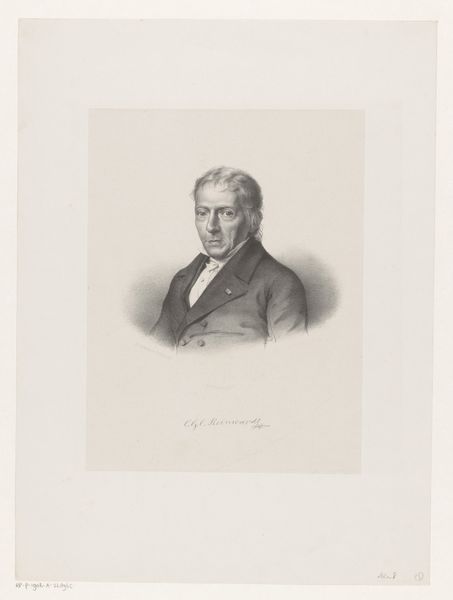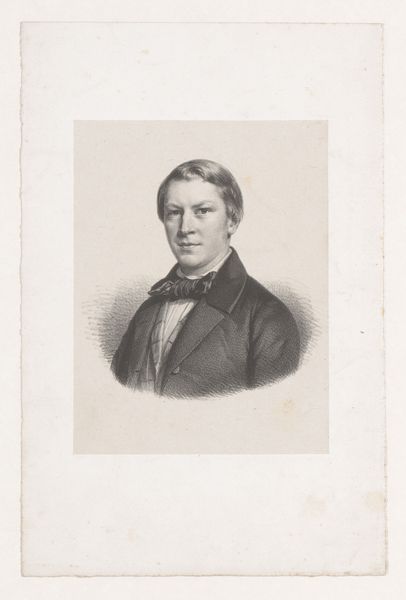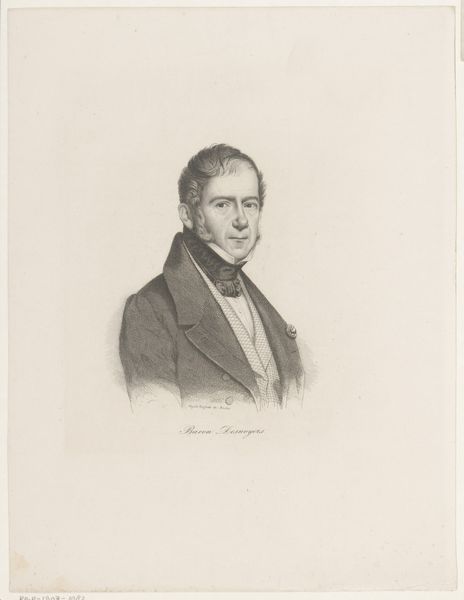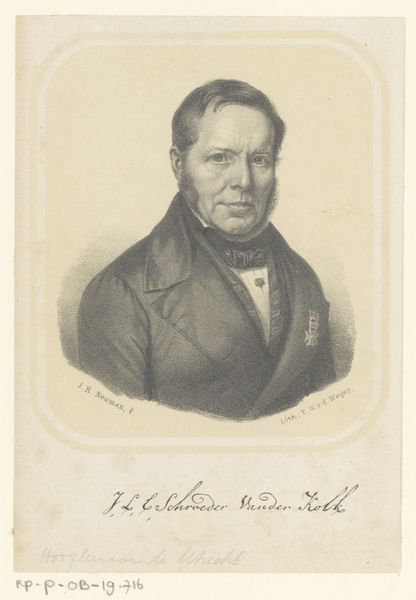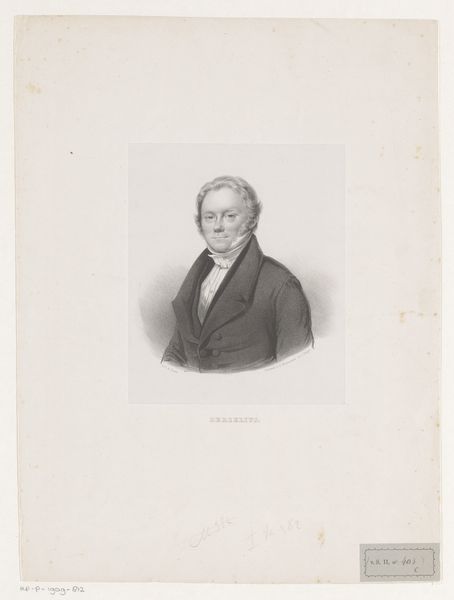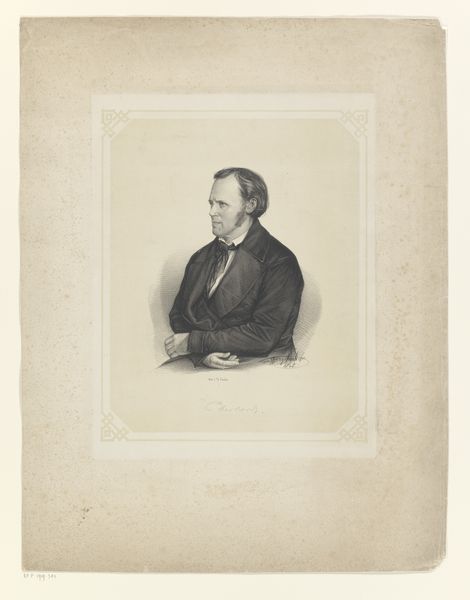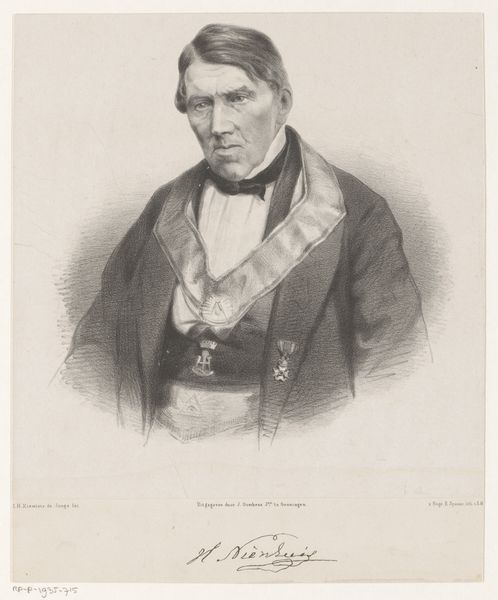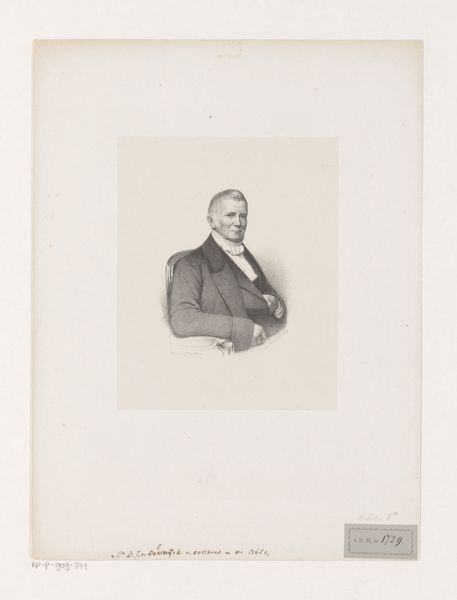
print, engraving
#
portrait
#
pencil drawn
#
neoclacissism
# print
#
pencil sketch
#
pencil drawing
#
line
#
portrait drawing
#
engraving
#
realism
Dimensions: height 357 mm, width 275 mm
Copyright: Rijks Museum: Open Domain
Curator: This compelling print captures the likeness of Dr. Pierre Fouquier. Created between 1825 and 1842, this engraving is attributed to Nicolas Maurin. Editor: It’s quite striking! There's a formality in the pose, but also something deeply unsettling in his eyes. They suggest a complex inner life, or perhaps a guardedness. Curator: Given that Dr. Fouquier was a prominent physician during a period of great social and political upheaval in France, it’s intriguing to consider his position within those shifting power dynamics. Who was he serving? What role did medicine play in upholding the social order? Editor: Exactly. The attire speaks of his professional status and social standing, a visual declaration of authority, perhaps even a silent performance of belonging to a particular class. Yet, I am drawn to the recurring symbolic weight that clothing and personal grooming can carry, reflecting shifts in social customs, philosophical thoughts, or even gender roles. Curator: Agreed, but I'm also thinking about how access to healthcare was distributed, particularly along lines of class, race, and gender during that time. Whose health was prioritized, and at whose expense? Dr. Fouquier’s portrait becomes a lens through which to examine the uneven terrain of medical care and the societal inequalities it perpetuated. Editor: I notice the very fine, precise lines of the engraving, which lend a sense of order and control. The sharp angles and clear contrasts seem very deliberate, conveying the character in an analytical mood. Is that a conscious echo of the doctor's analytical profession? Is the sharp line work designed to inspire confidence and suggest precision? Curator: Certainly. It reminds me how portraits in that era often functioned as tools for shaping and reinforcing social hierarchies, creating visual representations of power that helped maintain the status quo. Editor: I hadn’t considered that the imagery almost seeks to reassure those of standing, through coded aesthetics. Curator: It underscores how critical approaches help unveil the ways art operates within intricate networks of influence. Editor: Exploring symbolic connections like these helps unlock so much about visual works, shedding light on not only artistic merit, but also culture’s collective memory and values.
Comments
No comments
Be the first to comment and join the conversation on the ultimate creative platform.
